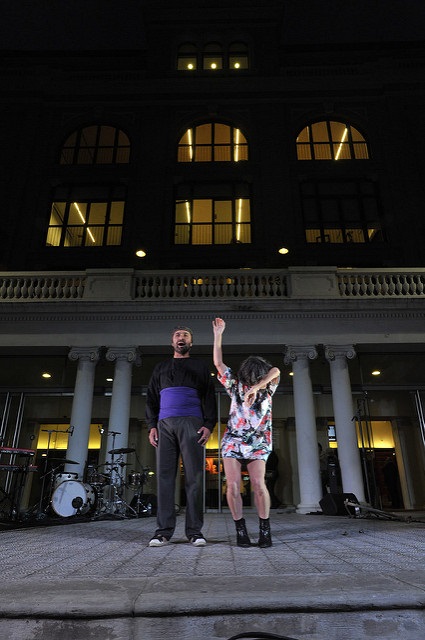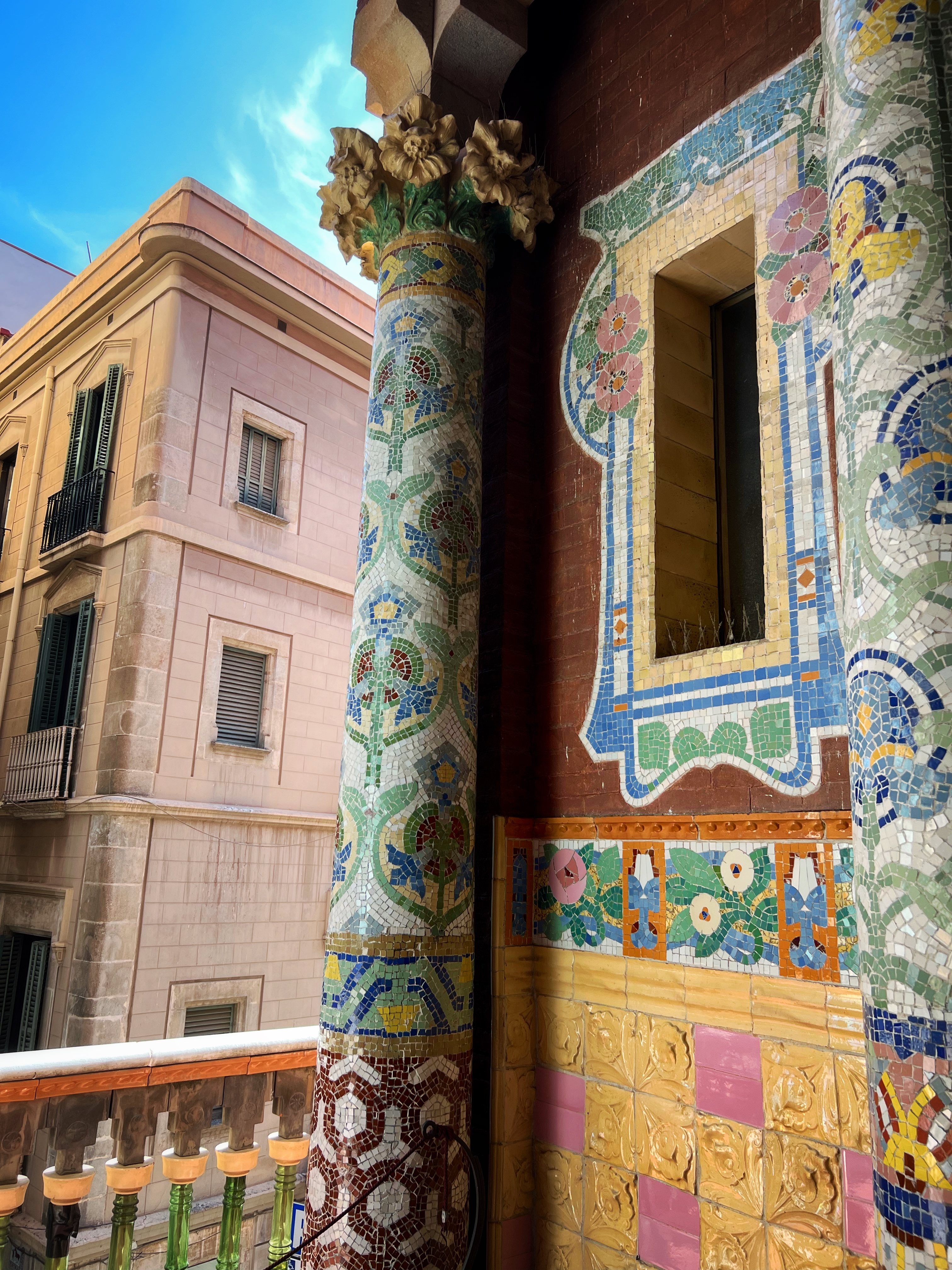|
Carles Santos
Carles Santos (; 1 July 1940 – 4 December 2017) was a Spanish artist who began his career as a pianist and later worked in many other creative disciplines, including musical composition, filmmaking, screenwriting, acting, scenic musical shows, graphics, montage, sculpture, photography, poetry, and prose. Biography Born in Vinaròs, Valencian Community (Spain) Carles Santos began his formal musical education at the prestigious Conservatori Superior de Música del Liceu in Barcelona. There, he received awards that gave him the opportunity to continue his studies in Paris, where he worked with Magda Tagliaferro, Jacques Février, Robert Casadesus, and Marguerite Long, among others. Later he studied with Harry Datymer in Switzerland. In 1961, he began his career as a pianist, with a repertoire that included works by Béla Bartók, Arnold Schoenberg, and Anton Webern. During these years, he also played the musical parts of Joan Brossa's ''Concert Irregular,'' which premiered ... [...More Info...] [...Related Items...] OR: [Wikipedia] [Google] [Baidu] |
Avant-garde Music
Avant-garde music is music that is considered to be at the forefront of innovation in its field, with the term "avant-garde" implying a critique of existing aesthetic conventions, rejection of the status quo in favor of unique or original elements, and the idea of deliberately challenging or alienating audiences. Avant-garde music may be distinguished from experimental music by the way it adopts an extreme position within a certain tradition, whereas experimental music lies outside tradition. Distinctions Avant-garde music may be distinguished from experimental music by the way it adopts an extreme position within a certain tradition, whereas experimental music lies outside tradition. In a historical sense, some musicologists use the term "avant-garde music" for the radical compositions that succeeded the death of Anton Webern in 1945,Paul Du Noyer (ed.), "Contemporary", in the ''Illustrated Encyclopedia of Music: From Rock, Pop, Jazz, Blues and Hip Hop to Classical, Folk, Worl ... [...More Info...] [...Related Items...] OR: [Wikipedia] [Google] [Baidu] |
Umbracle
''Umbracle'' is an experimental feature film by Catalan filmmaker Pere Portabella. It is often seen as a companion piece to his ''Cuadecuc, vampir'', also starring Christopher Lee. Both films were completed in 1970, though ''Umbracle'' was not shown until 1972. Like ''Cuadeuc'', the entire film is photographed on different kinds of high contrast black & white film stock and features a sound track by frequent Portabella collaborator Carles Santos. Unlike ''Cuadecuc'', ''Umbracle'' features several scenes of synchronized sound, including a notable scene where Christopher Lee recites Edgar Allan Poe's "The Raven" and sings opera in an empty theatre, and a lengthy sequence of Spanish filmmakers discussing censorship in their country very frankly, their statements later reinforced by a nearly 15-minute segment from a pro-Franco film. Any sound effects used in the film usually have no relation to the scenes themselves, for example the sound of a telephone ringing can be heard in a scen ... [...More Info...] [...Related Items...] OR: [Wikipedia] [Google] [Baidu] |
Cuadecuc, Vampir
''Vampir-Cuadecuc'' is a 1970 Spanish experimental feature film written, produced, and directed by Pere Portabella. It stars Christopher Lee, Herbert Lom, Soledad Miranda, and Jack Taylor. The film tells an abbreviated version of the Dracula story using behind-the-scenes footage from the Jesús Franco film ''Count Dracula''. Plot The film tells the story of Dracula using behind-the-scenes footage from the making of the film ''Count Dracula'', complete with scenes of the cast and crew working on the film in between takes. The film also shows how the special effects and sets of the film were designed, often splicing these moments with footage of the actors. With the exception of the final scene, which features Christopher Lee explaining the end of the novel, the film is mostly silent, with sparse music and sound effects sparingly used. Cast * Christopher Lee as Himself/Dracula * Herbert Lom as Himself/Prof. Van Helsing * Soledad Miranda as Herself/Lucy Westenra * Jack Taylo ... [...More Info...] [...Related Items...] OR: [Wikipedia] [Google] [Baidu] |
Grabaciones Accidentales
Grabaciones Accidentales, SA ( en, Accidental Recordings; often abbreviated to GASA) is a Spanish independent record label founded in 1981 by Paco Trinidad with members of the bands Esclarecidos and Décima Víctima. In addition to publishing albums by the founding members, the label was responsible for releases by other Spanish artists and the distribution of releases by some foreign artists. Along with other labels founded around the same time, such as DRO Records, Grabaciones Accidentales is considered to be one of Spain's first independent record labels. History Grabaciones Accidentales was established in Madrid in late 1981 by members of the bands Esclarecidos and Décima Víctima. Aviador Dro's label DRO Records, with which GASA would later collaborate, was also founded around this time. Music critic Diego Manrique announced the label's establishment in the December 1981 issue of Spain's ''Rock Espezial'' magazine, explaining that the label would sign artists for one rel ... [...More Info...] [...Related Items...] OR: [Wikipedia] [Google] [Baidu] |
Premio Nacional De Música
The National Music Award ( es, Premio Nacional de Música, links=no) is one of Spain's annual National Awards by the Ministry of Culture Ministry of Culture may refer to: *Ministry of Tourism, Cultural Affairs, Youth and Sports (Albania) * Ministry of Culture (Algeria) *Ministry of Culture (Argentina) *Minister for the Arts (Australia) *Ministry of Culture (Azerbaijan) * Ministry of .... The Spanish Government makes an annual recognition of the people or groups who have made an outstanding or innovative contribution to Spanish cultural life over the previous 12 months, through the conferring of an award in one of 29 areas covering the spectrum of plastic, fine and performing arts, literature, film, history and so on. The Spanish Ministry of Culture awards two prizes for music every year, generally one for creation (composition) and one for interpretation (work by an individual artist or ensemble, or a musicologist). [...More Info...] [...Related Items...] OR: [Wikipedia] [Google] [Baidu] |
Premios Max
The Max Awards for the Performing Arts (Los Premios Max de las Artes Escénicas, ), commonly known as the Premios Max, are presented annually to honour professionals and organisations in Spain for their contributions to the performing arts. The awards are named after Max Estrella, the protagonist of Bohemian Lights, which is considered to be one of the most outstanding works of Spanish theatre of the twentieth century. The awards are organised by the General Society of Authors and Publishers, which created the awards in 1998, alongside the Spanish Academy of the Performing Arts. The awards ceremony has a different theme and generally takes place in a different location each year, and the hosting city is considered to be Spain's capital of the performing arts for that year. The ceremony is performed and directed by prestigious actors and directors at a national level, and features theatre, dance, and musical performances throughout the show, which is broadcast on radio and televi ... [...More Info...] [...Related Items...] OR: [Wikipedia] [Google] [Baidu] |
Creu De Sant Jordi
The Creu de Sant Jordi (, in English 'St George's Cross') is one of the highest civil distinctions awarded in Catalonia Catalonia (; ca, Catalunya ; Aranese Occitan: ''Catalonha'' ; es, Cataluña ) is an autonomous community of Spain, designated as a ''nationality'' by its Statute of Autonomy. Most of the territory (except the Val d'Aran) lies on the north ... (Spain), surpassed only in protocol by the Gold Medal of the Generalitat de Catalunya. It was established by the Generalitat de Catalunya autonomous government by virtue of the ''Decret 457/1981 de 18 de desembre'' in 1981.Normativa: DECRET 457/1981, de 18 de desembre, creant la Creu de Sant Jordi de la Generalitat de Catalunya; DECRET 182/1994, de 14 de juny, pel qual es modifica el Decret 457/1981, de 18 de desembre, creant la Creu de Sant Jordi de la Generalitat de Catalunya The medal was designed by goldsmith Joaquim Capdevila. Recipients * List of awardees * List of awardees in the Balearic Islands Refer ... [...More Info...] [...Related Items...] OR: [Wikipedia] [Google] [Baidu] |
Catalonia
Catalonia (; ca, Catalunya ; Aranese Occitan: ''Catalonha'' ; es, Cataluña ) is an autonomous community of Spain, designated as a ''nationality'' by its Statute of Autonomy. Most of the territory (except the Val d'Aran) lies on the northeast of the Iberian Peninsula, to the south of the Pyrenees mountain range. Catalonia is administratively divided into four provinces: Barcelona, Girona, Lleida, and Tarragona. The capital and largest city, Barcelona is the second-most populated municipality in Spain and the fifth-most populous urban area in the European Union.Demographia: World Urban Areas – Demographia, April 2018 Current day Catalonia comprises most of the medieval and early modern Principality o ... [...More Info...] [...Related Items...] OR: [Wikipedia] [Google] [Baidu] |
Fira Mediterrania In Manresa
Fira Mediterrània of Manresa (Catalonia-Spain) is a performing arts fair rooted in Mediterranean tradition. It has two main areas of focus: popular culture (based on a dialogue between traditional, regional culture and creative innovation) and world music. It has been held every year since 1998 and has become a setting for exchange professionals that sell and buy productions. Most activities are open to the public at large and the Fira uses a range of stage areas in the city centre. Despite this, activities exclusively aimed at industry professionals are a cornerstone of the Fira. These include industry conferences, a recruitment place, partnership network meetings and presentations. Together with FiràTarrega (the international market for performing arts), Mercat de Música Viva de Vic (Vic live music market), the Sismòfraf d'Olot, the Mostra d'Igualada and the Fira Trapezi, the Fira Mediterrània completes the Generalitat (Regional Government) of Catalonia's map of artistic ... [...More Info...] [...Related Items...] OR: [Wikipedia] [Google] [Baidu] |
Fundació Joan Miró
The Fundació Joan Miró ( ; "Joan Miró Foundation, Centre of Studies of Contemporary Art") is a museum of modern art honoring Joan Miró located on the hill called Montjuïc in Barcelona, Catalonia (Spain). History The idea for the foundation was made in 1968 by Joan Miró. Miró formed the foundation with his friend Joan Prats. Miró wanted to create a new building that would encourage particularly younger artists to experiment with contemporary art. The building was designed by Josep Lluís Sert to ensure that this work could also be made available to the public and exhibited. He designed the building with courtyards and terraces and to create a natural path for visitors to move through the building. Building began on the mountain of Montjuïc and the foundation opened on 10 June 1975. Not only was the architect a close friend of Miró but so was the first president Joaquim Gomis and Miró was amongst the first board. It was claimed that the new foundation represented a new wa ... [...More Info...] [...Related Items...] OR: [Wikipedia] [Google] [Baidu] |
Palau De La Música Catalana
Palau de la Música Catalana (, en, Palace of Catalan Music) is a concert hall in Barcelona, Catalonia, Spain. Designed in the Catalan '' modernista'' style by the architect Lluís Domènech i Montaner, it was built between 1905 and 1908 for Orfeó Català, a choral society founded in 1891 that was a leading force in the Catalan cultural movement that came to be known as the ''Renaixença'' (Catalan Rebirth).Benton, Tim. ''Modernismo in Catalonia'' In: ''Art Nouveau Architecture'' (Frank Russell, editor), New York: Arch Cape Press, 1986. . It was inaugurated on 9 February 1908. The construction project was mainly financed by Orfeó Català, but important financial contributions also came from Barcelona's wealthy industrialists and bourgeoisie. The palace won the architect an award from the Barcelona City Council in 1909, given to the best building built during the previous year. Between 1982 and 1989, the building underwent extensive restoration, remodeling, and extension unde ... [...More Info...] [...Related Items...] OR: [Wikipedia] [Google] [Baidu] |



